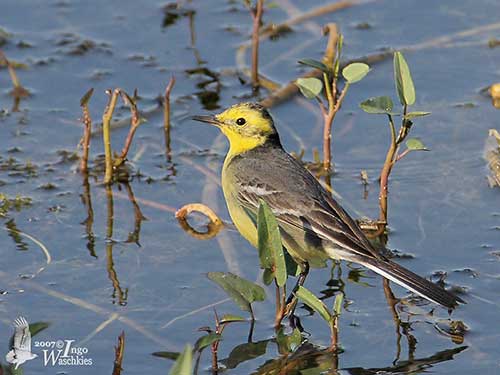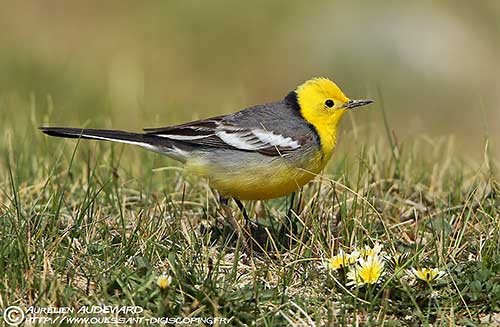
Fr : Bergeronnette citrine
Ang : Citrine Wagtail
All : Zitronenstelze
Esp : Lavandera Cetrina
Ita : Cutrettola testagialla orientale
Nd : Citroenkwikstaart
Sd : Citronärla
Photographers:
John Anderson
John Anderson Photo Galleries
Aurélien Audevard
OUESSANT DIGISCOPING
Otto Plantema
Trips around the world
Ingo Waschkies
My bird pictures on Pbase
Text by Nicole Bouglouan
Sources:
HANDBOOK OF THE BIRDS OF THE WORLD Vol 9 - by Josep del Hoyo - Andrew Elliot - David Christie - Lynx Edicions - ISBN: 8487334695
THE HANDBOOK OF BIRD IDENTIFICATION FOR EUROPE AND THE WESTERN PALEARCTIC by Mark Beaman, Steve Madge - C. Helm - ISBN: 0713639601
BIRDS OF THE MIDDLE EAST by R.F. Porter, S. Christensen, P Schiermacker-Ansen C.Helm - ISBN: 0713670169
ENCYCLOPEDIE DES OISEAUX DE FRANCE ET D’EUROPE – de Peter Hayman et Rob Hume - Flammarion – ISBN : 2082009920
Wikipedia, the free encyclopaedia
Citrine Wagtail
Motacilla citreola
Passeriformes Order – Motacillidae Family
INTRODUCTION:
The Citrine Wagtail resembles Western Yellow Wagtail, but it is marginally plumper, with slightly longer tail and legs and stouter bill. The term “citrine” refers to the yellow plumage, whereas the name “wagtail” refers to their habit of wagging their tail constantly.
The Citrine Wagtail breeds at northern latitudes in Europe and Asia, and migrates southwards to more temperate regions of Indian Subcontinent and SE Asia. This species favours the wet areas all year round, and can be seen at high elevation.
The Citrine Wagtail is not globally threatened with currently stable populations.

DESCRIPTION OF THE BIRD:
Biometrics:
Length: 16-20 cm
Weight: 18-25 g
The Citrine Wagtail adult male of nominate race in breeding plumage has bright yellow head and underparts. Hindneck and upper mantle are black, extending onto the sides of the breast. Back and scapulars are dark grey with olive wash. The rump is darker grey and the uppertail-coverts are black. On the upperwing, flight-feathers, greater and median coverts are blackish-brown with pale edges. The white tips of the coverts form two conspicuous white wingbars. The lesser coverts are dark olive-grey. The long tail is black with white outer pairs of rectrices.
The underparts are yellow with some greyish tinge on breast sides and flanks, or some dark spots on breast sides. The undertail-coverts are paler, mostly yellowish white.
The bill is black. The eyes are dark brown. Legs and feet are blackish-brown.
The non-breeding male is duller, with grey to dark olive-grey hindcrown to mantle and scapulars. It may show light dark mottling above and the yellow areas are paler.
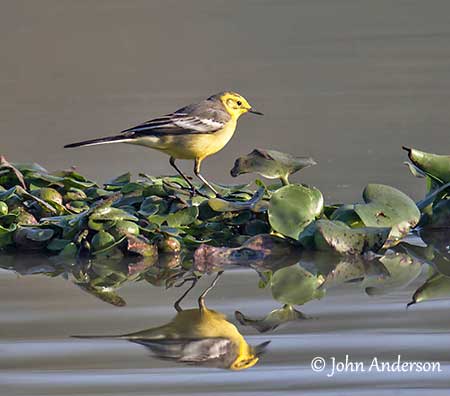
The adult female is similar to non-breeding male. Outside the breeding season, she is duller overall with greyer upperparts. The yellow areas are paler, breast sides and flanks are grey but the belly is whiter.
The juvenile resembles juvenile Western Yellow Wagtail, but it has broader supercilium, broader and whiter wingbars and whitish secondary’s edges, not yellowish.
The immature lacks yellow in plumage and is more buff and greyer than non-breeding female, with breast sides and flanks tinged olive-brown.
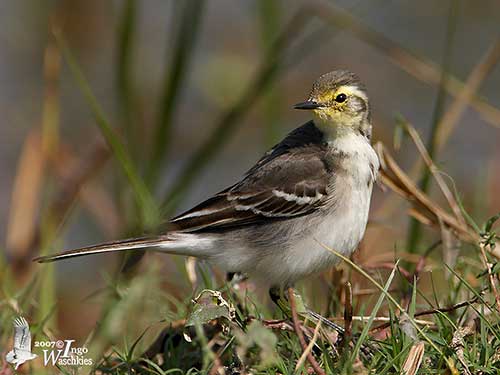
SUBSPECIES AND RANGE:
The Citrine Wagtail has three recognized subspecies.
M.c. citreola (described above) breeds in N Europe in Finland and N Russia, E to C Siberia, Transbaikalia, Mongolia and NW Manchuria. It winters in Indian Subcontinent and SE Asia.
M.c. werae breeds in E Europe, in S Baltic Republics and E Poland, Belarus and Ukraine E to Russian Altai, N and E Kazakhstan and NW China. It winters in Indian Subcontinent and SE Asia.
In this race, the male has purer grey back than nominate, the underparts are paler and the flanks less grey.
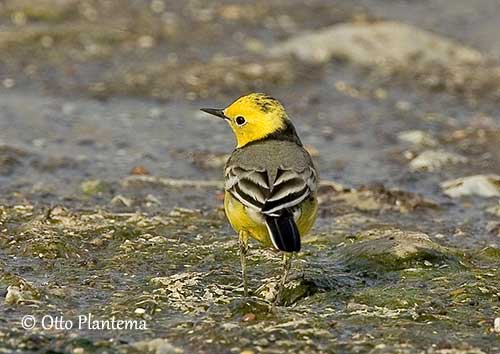
M.c. calcarata breeds in E Iran, Afghanistan and C Asian mountains, E to C China and S to N Himalayas. It winters in lowlands from S Afghanistan E to Myanmar.
The male has all-black upperparts. Head and underparts are deeper yellow and extend to the undertail-coverts. The tertials show broader and whiter edges, and the greater coverts are usually white. The outer rectrices have more black on inner webs. The female may have dark spots on the upperparts, and she has longer bill and legs.
HABITAT:
The Citrine Wagtail breeds in wet meadows, marshy tundra with willow thickets, mountain meadows and generally in wet areas including marshes and edges of lakes.
Outside the breeding season, it can be found in a variety of moist open habitats with pools and streams, brackish lagoons and coastal marshes, ditches…
This species breeds from sea-level up to 4600 metres of elevation.
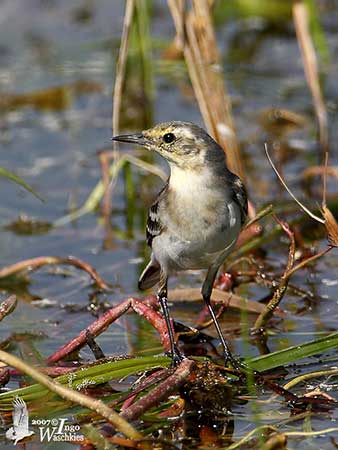
CALLS AND SONGS: SOUNDS BY XENO-CANTO
The Citrine Wagtail’s typical call resembles that of the Western Yellow Wagtail but it is harsher, louder and slightly shorter, a more rasping, slurred “dzreeip” or “tzreep”. It utters sometimes a double “zielip”.
The song is usually given from perch or during short flight, a repeated calling interspersed with warbling phrases.
BEHAVIOUR IN THE WILD:
The Citrine Wagtail feeds mainly on aquatic invertebrates and their larvae, including Odonata (adult and larvae), Coleoptera (beetle larvae), Diptera (adult and larvae), and spiders.
It forages by picking items from ground or water surface, and it wades in shallow water up to belly, or walks on floating leaves and vegetation. It also hunts the preys disturbed by cattle by walking around and between the legs of the animals. While picking, the bird may sometimes plunge the head into the water while searching for insect larvae.
It also catches insects by flycatching, or snatches then in flight with a brief upwards flutter.
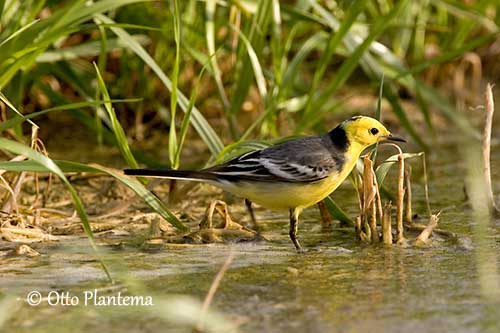
The Citrine Wagtail is monogamous and territorial during the breeding season. It can become very aggressive against intruders and conspecifics. During aggressive displays, the body plumage is puffed up and the tail is raised and directed towards intruders.
The male performs a courtship flight display, flying into the air before descending while singing. During the descent, wings and tail are vibrating. Other displays can be observed with quivering outspread wings. Both adults share the nesting duties.
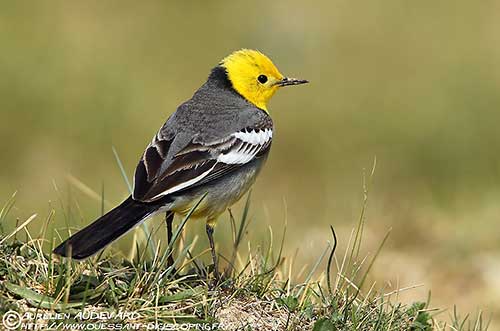
The Citrine Wagtail is migratory and winters mainly in India and SE Asia. They leave the breeding grounds between August and October. The return migration starts in March, with arrival between March and May in breeding range, later in N Siberia, mostly June. They migrate and winter in flocks.
The Citrine Wagtail is an agile flier, performing flight displays and flycatching while hunting for flying insects. The flight is usually undulating.
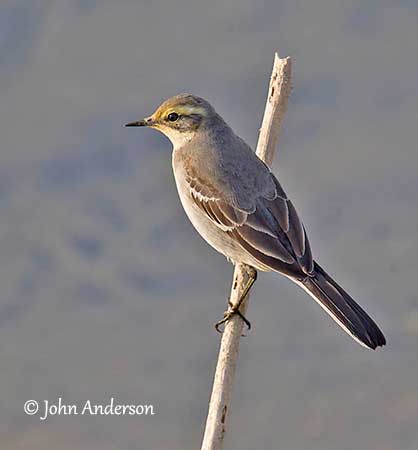
REPRODUCTION OF THIS SPECIES:
The breeding season takes place between late April and June in N, mostly May/August in SE for the race M.c. calcarata. Two broods are usually laid.
The nest is placed on the ground or in thick vegetation. The female builds a cup-shaped structure with moss, leaves and stems, and the cup is lined with softer material such as feathers, hair and wool.
She lays 4-6 eggs and both adults incubate during two weeks. The chicks fledge about 13-15 days after hatching.
PROTECTION / THREATS / STATUS:
The Citrine Wagtail has large range in which it is common. The global population is placed in the band 2,630,000/31,200,000 individuals after a very preliminary estimate. But further validation of this estimate is required. However, this population is suspected to be stable.
The Citrine Wagtail is currently evaluated as Least Concern.
